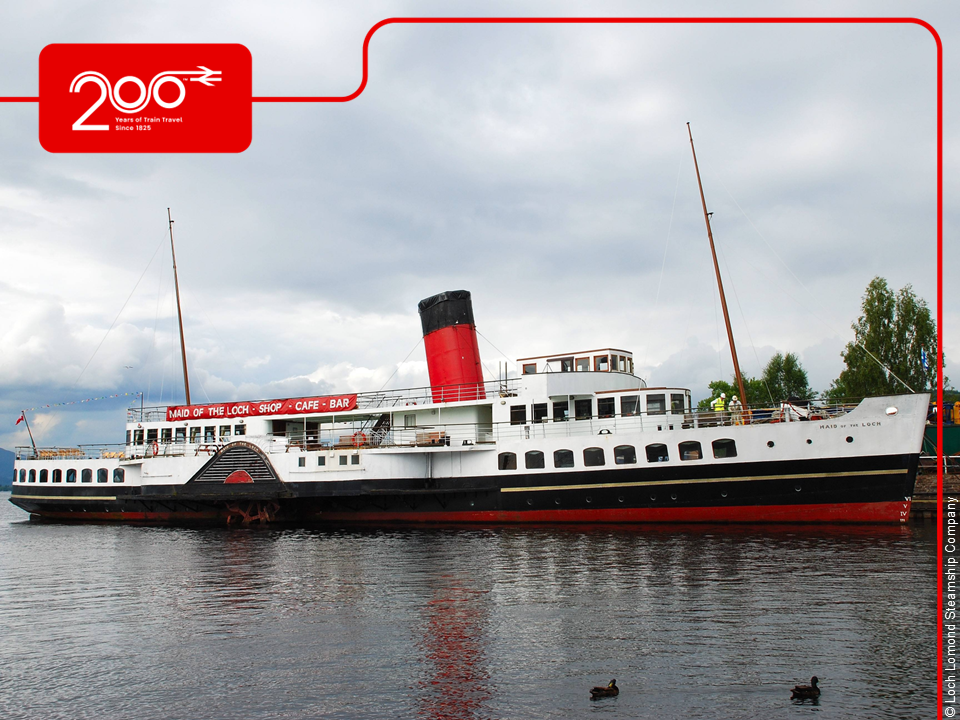Welcome to our third Railway 200 Friday! Today, we’ll be having a look at the interplay between rail and paddle steamers. Particularly, we will look at instances when the steamer excursion trade worked alongside the railway, be it through partnerships or direct ownership. From the mid-19th century onwards, both paddle steamers and trains began servicing large numbers of urban populations keen to escape their harsh industrial cities to tourist destinations further afield, particularly along the seaside. Steam was allowing more and more people to escape their realities, even if just for the day, providing for the advent of mass tourism.
This excursion or day-trip trade often happened in tandem between the paddle steamers and the railway companies, with “out by boat, back by train” tickets being quite popular. Trains provided an influx of passengers for the paddle steamers, coming from regions further inland, as well as an easy return option. In turn, paddle steamers added an extended leisure offer to rail companies which could attract a wider number of individual customers.
Partnerships between rail and steam companies were commonplace. For example, the P & A Campbell shipping company, based in Bristol and active between 1893 and 1979, would often advertise joint tickets with local railways, both to arrive at the departure port as well as to carry on travelling once leaving one of their ‘white-funnel’ steamers. Offering trips across the Bristol Channel, train tickets could be arranged for the return trip or to travel further afield. Iconic vessels such as the Bristol Queen would thus work in tandem with local railways, with both sides benefiting the other.
Often, however, the railway companies themselves owned their own paddle steam fleets. This way, they had full control of the entire journey for traveling passengers, ensuring a smooth operation as well as the full share of profits. This was the case with the Barry Railway Company, which, interestingly, operated along the same area as P & A Cambell. In 1903, the company announced it would run excursion routes throughout the Bristol Channel out of Barry, looking to provide a service to South Wales tourists. This undertaking proved unsuccessful, with all paddle steamers being sold off in 1910, mostly to P & A Campbell.
Further north, the railways had better success in operating their own excursion paddle steamer fleets. The Caledonian Steam Packet Company, initially attached to the Caledonian Railway, was created to release the railway from a dependance on private owners, both for ferry and pleasure services. Initially in fierce competition with other railway company fleets, such as that of LNER, the transport nationalization in 1948 meant that the Caledonian Steam Packet Company became the sole operator of railway paddle steam cruises on the Clyde, taking over vessels such as PS Waverley.
The Caledonian Company also operated the last traditional paddle steamer built for use in the UK: PS Maid of the Loch. Built in 1953 by A & J Inglis of Glasgow, who had a longstanding history of building paddle steamers for railways operating in Scotland – they built Waverley as well – Maid of the Loch was actually assembled twice. Constructed in Glasgow, she was then transported in pieces by rail and reassembled at her home port of Balloch on Loch Lomond, further tying her to railway heritage. However, she had come at a time when excursion paddle steamers were on the decline, with extended rail, bus and car services taking over demand. In 1981, she was sold by Caledonian MacBrayne, the Caledonian Company’s successor whose main focus was on ferry services.
To this day, the surviving paddle steamers in the UK continue their associations with rail heritage, and current partnerships between them will be explored at a later date. Until then!

